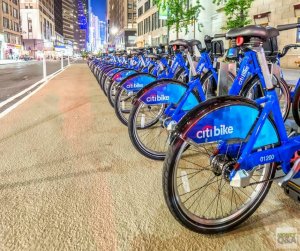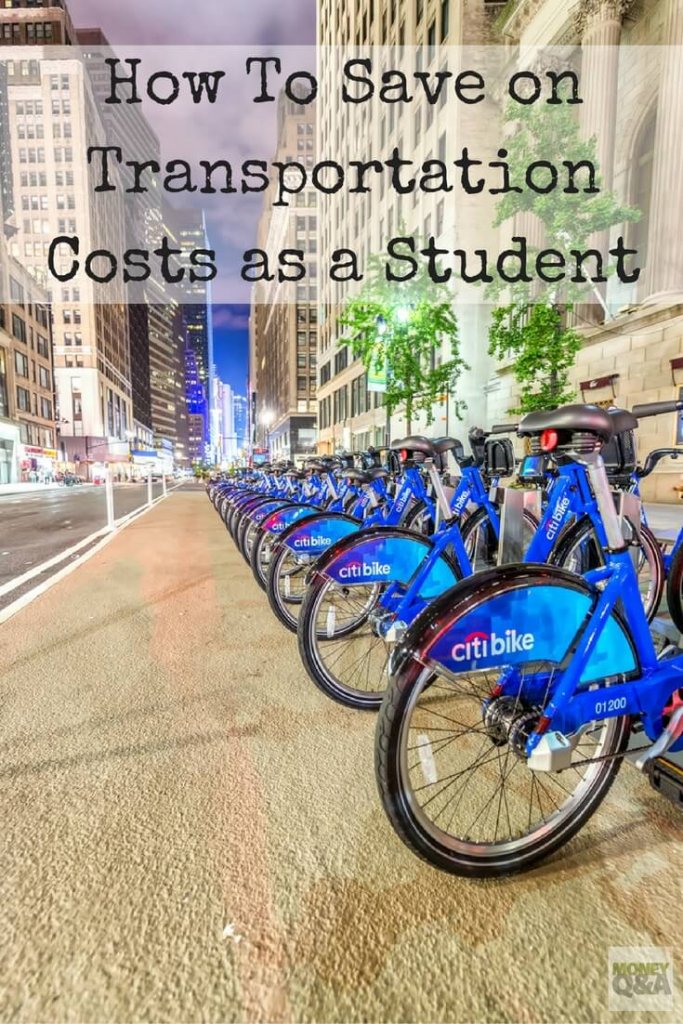
Commuting to school is hard enough for college students, but affording a parking permit and finding a parking spot on campus can be a nightmare for many students. Oftentimes, universities sell far more permits than they have spaces available for students, which is a huge problem for commuters who subsequently spend several minutes (or even close to an hour) driving around campus just to find a place to park their cars. But, there are ways to save on college transportation costs.
It’s a huge hassle that is not only a waste of money. Why pay for a resource if it’s not consistently available? But, also a waste of time for students who would rather get to class on time through other means of transportation.
How to Save on College Transportation Costs
If you or your kid is going off to college this fall and needs a better way to get to school, then check out these viable alternatives for college transportation:
Free Bus Passes for Students
Many universities have partnerships with local public transportation departments, which means that students who apply for a bus pass or train card can usually get a steep discount on fares. Some universities even offer free modes of public transportation, including shuttles and free bus passes.
Obviously this only works if you live relatively close to campus. But, major universities are also starting to partner with public transportation offices in neighboring communities to reach out to commuters who need help getting to campus safely and affordably.
Sometimes, all you need to do is show your student I.D. card to get free or discounted fares – only during the academic year. Other programs dole out bus passes, train tickets, and subway passes to any student that applies.
You’ll have to visit an administrative office on campus to acquire your public transportation card – usually a finance department. But, it’s well worth the visit if it means a full year of cheap transportation!
Bike Sharing Programs
If your university is located in a fairly metropolitan area with designated bike lanes in the streets, then chances are, you currently have or will soon have access to a bike-sharing program. There are over 90 bike-sharing programs through American universities today. And, more college transportation offices are considering implementing these programs to ameliorate their on-campus parking woes.
For example, Ohio State University’s Columbus campus launched a bike-sharing program back in the summer of 2015, with 300 bikes in their fleet that were painted in the school’s colors of red and gray. Daily passes for students cost $6. And, annual memberships ran up to $75.
There are multiple different locations where students can access these bikes, which makes it easier for students to either get around a large campus or commute from off-campus housing without getting stuck in battles over parking spaces.
Carpooling
Did you know that many campuses offer special parking spots and/or discounts for student groups that carpool? There are plenty of benefits to carpooling in college, which range from saving money on gas – it’s easier to pay for gas when you have 3+ other people chipping in – to getting access to the carpool lane on freeways to avoid traffic on the way to campus.
Many universities have separate websites for carpool sign-ups where you can find students who live near you to carpool with. It’ll save you money on gas and maintenance on your own vehicle. It will also potentially give you access to a coveted parking spot on-campus that is reserved only for carpool groups.
Parking Fee Waivers
Some university campuses offer parking waivers or discounts for military veterans, as well as free parking for disabled students. If you have no choice but to commute to campus, this can be extremely helpful when it comes to both paying for parking and finding a spot on-campus to suit your unique needs.
All you need to do is contact your school’s department of college transportation services (or department of rehabilitation, depending on the circumstances) to inquire about parking opportunities.
Refinance federal and private student loans at SoFi.com today!
Save Money on Gas
If riding public transportation isn’t an option for you, then how are you supposed to maintain a frugal lifestyle as a college student with a car? Fortunately, there are still plenty of options to help you save money on auto expenses, such as:
- Use Gas Buddy (or their free app) to find cheap gas stations close to campus
- Use Gift Card Granny or Cardpool to buy discounted gift cards for gasoline
- Wait for a parking space on campus by pausing near an area where students are returning to their cars (don’t block entire rows, though) instead of driving around in circles for 20+ minutes to find a space
Student Discounts on Auto Insurance
Say what you will about the DMV, but it is pretty helpful when it comes to directing the college crowd to student discounts on auto insurance. If you have at least a 3.0 GPA and you’re enrolled full-time in college classes, you could qualify for a special discount on your auto insurance rates.
Usually, an auto insurance company will require proof before applying the discount – transcripts, most likely. But, it could save you hundreds of dollars over the course of your college career, so don’t miss out!
Get a Free Auto Insurance Quote & Compare Rates
Lyft or Uber
Lyft and Uber are fantastic resources for college students, whether they work as a ride share driver to help pay the bills or use Uber/Lyft to get to and from school when the car won’t start one morning.
If you want to save money on rides with Uber, you can use a first-time Uber rider’s promo code or refer friends to join Uber. You can earn a free trip worth up to $20 for each person who signs up and uses Uber. Lyft is usually more generous with their free ride offers and promotions. You can get access to if you sign up for Lyft email updates.
It’s not cheap to rely solely on ride-sharing companies to get to and from school. But, it’s preferable to using student loans to pay for temporary living expenses like gas or a daily parking permit.
Unless you live in an on-campus dorm, getting to campus is probably going to be tricky for the first couple weeks of the semester. You’re still learning the ropes. But, college transportation doesn’t have to be wildly expensive.
Many colleges charge as much as $150+ per semester for parking. So, consider following some of the above tips for lowering your college transportation costs this academic year.
What about you? How do you save on college transportation costs for your children? How did you do it while you were in school?

